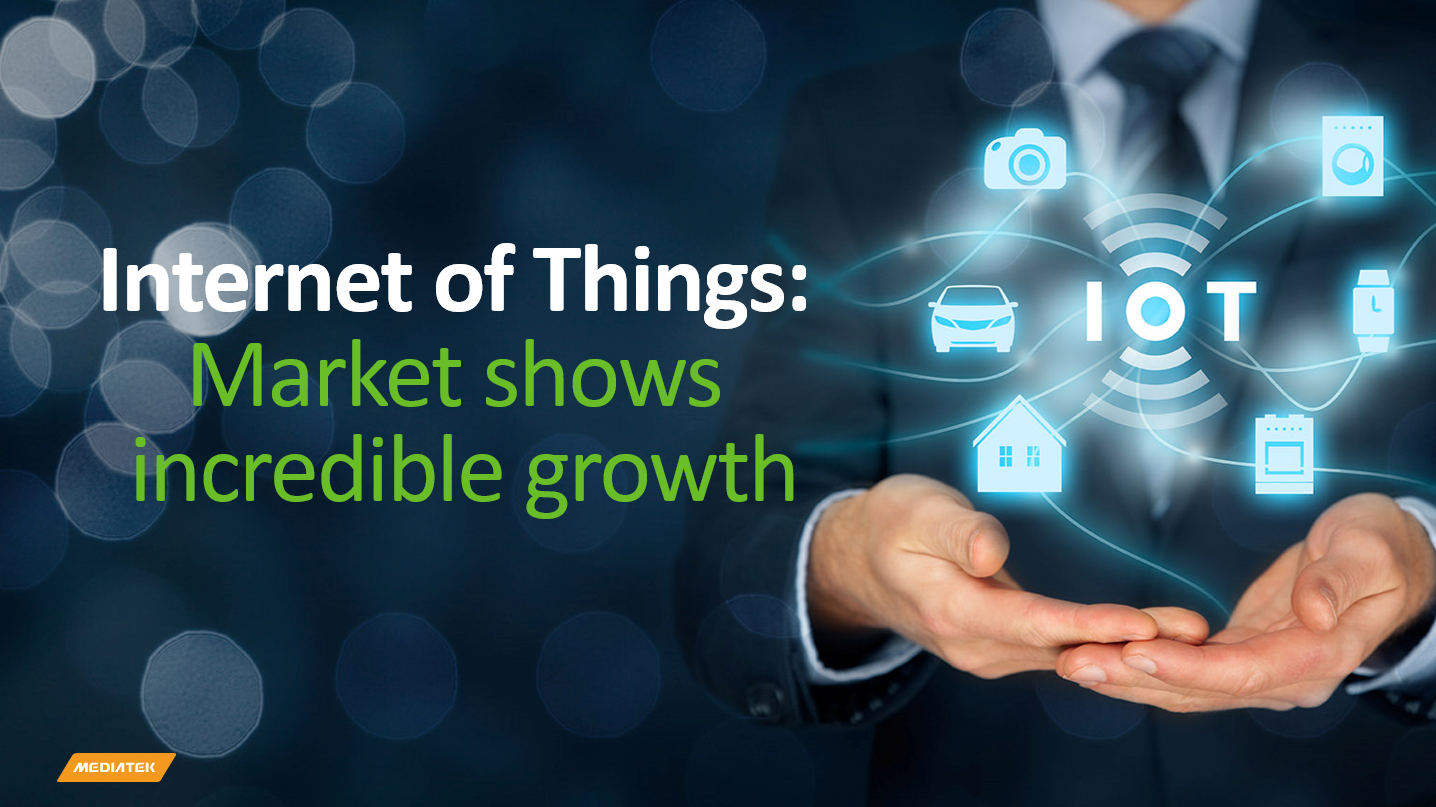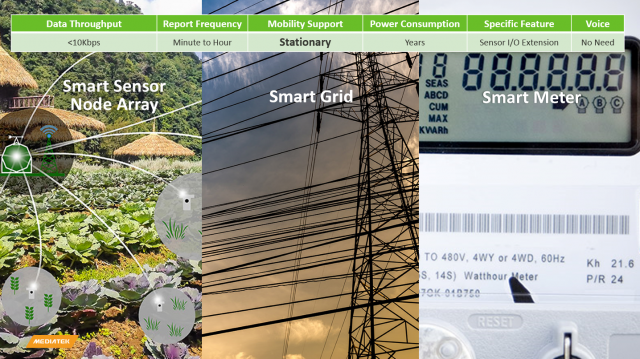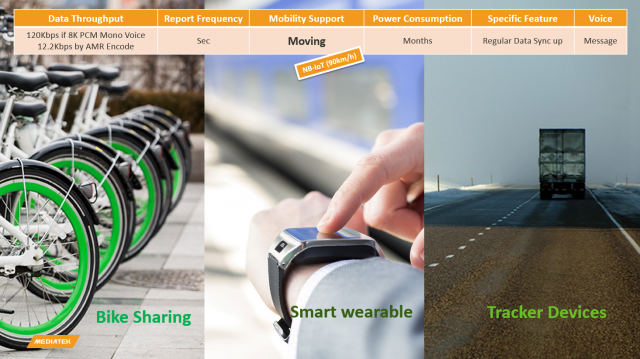- Home
- Symmetry Blog
- From MediaTek: Low-Power Wide-Area Network And Use Cases
From MediaTek: Low-Power Wide-Area Network And Use Cases

The progression of personal computing technologies such as desktop PCs and laptops, to the mobile phone or smartwatch, intelligent devices have gradually penetrated every aspect of our lives at the personal level and internet connectivity via short or long-range communication has become an essential factor in this technology evolution. For a modern personal computing device, the first priority is to establish a reliable, smooth connection to the outside world. CompTIA predicts an annual compound growth rate from 2014 to 2020 of all connected devices is expected to be as high as 23.1%, reaching a total of 501 billion units by 2020, where each connected device uses at least one chip-based module.
Internet of Things (IoT), the next wave of revolution, absolutely relies on communication technologies, using a combination of connections that is either human-to-device or machine-to-machine. Because IoT products are anticipated to be mass distributed on the scale of billions in order to achieve feasibility of mass production and economies of scale, an appropriate communication technology must be used to accommodate future connectivity capacity without overwhelming it. In the home, office, shopping malls or industrial entities, the use of short-range communication technology is currently predominant as communication infrastructure is tightly integrated in these environments. However, IoT is expected to act far beyond the existing use model. It must serve to work in a wide range of settings that include potentially remote, long-distance locations, or in places where a wireless connection is typically very poor. The development of Low-power Wide area (LPWA) network is in response to the needs of IoT devices that will be installed in places that would have previously been unimaginable. In large-scale, mass deployments, is expected to further replace the short distance communication technology applications by allowing a single mass produced device to be applicable in any scenario.
Thanks to the technology foundation laid by mobile devices, global telecom operators have already established a worldwide network infrastructure. Although these mobile devices use progressive generations of networking (2G / 3G / 4G, etc.), these connectivity standards are designed for high throughput, fast response and come with high power consumption and high cost of implementation. In contrast, IoT devices only require low throughput, and are more tolerant to connectivity intervals or delays. However, they are focused on an economical design that is both as power and cost efficient as possible, and especially used for massive deployment. After the practical evaluation of how to adapt the global network infrastructure to meet the needs of future exploding number of IoT devices, the low-power wide-area networking technology has been divided into two groups; one uses unlicensed spectrum such as LoRa and SigFox, the other is operating in the 3GPP licensed spectrum that supports 2G / 3G / 4G mobile technologies, through new standards of LTE Cat-M and NB-IoT.
The unlicensed spectrum cannot be solely relied upon so it must be supported by 3GPP licensed spectrum to ensure the feasibility of global standards that meet the needs and rapid popularization of LPWA technologies. As long as the infrastructure and technology are ready, NB-IoT will represent the dominant technology with explosive deployment potential of over 150 million units per year as we look forward to 2020.
The main use cases of LPWA networking technology are expected to be transportation (logistics and automotive), smart metering, remote control and sensors, and point of sale devices. However, the breadth of potential applications of LPWA-enabled IoT devices is vast; with the potential for large-scale deployment through industrial, commercial, municipal and even agricultural use.
LPWA devices fall into two core use cases: fixed and mobile.
In fixed use cases the data transmission rate is usually less than 10 Kbps, with ‘long’ intervals between updates anywhere between every few minutes to several hours. It can be flexible to work around network availability and can operate in very low power states between connection intervals. It is anticipated that device deployment will reduce the need for manual maintenance and functional operation, or open up new monitoring areas that are potentially hazardous, difficult and/or expensive to get to. Therefore the demand for a device that can run on battery power, without human interaction, for several years is expected.
Sensor technologies will be a crucial part of fixed IoT devices which allows continually collecting information from the surrounding environment. Agricultural applications could monitor soil, air or water quality, or eventually remote, autonomous vehicle control. A municipal example would be city council monitoring the water or gas pipes for leaks, street lighting use and crime prevention. This plays the key role in the smart grid implementation. In daily life, smart meters will send out water, gas, and electrical readings autonomously to improve efficiency of billing and to avoid alert home owners or industrial overseers to unnecessary waste or unexpected peak demand.

In mobile use cases the data demand is expected to be much higher, between 12.2 Kbps to 120 Kbps, due to the support for voice messaging in wearable applications. In this kind of use cases, mobile IoT devices will also support location awareness via modem, so the frequency of online updates will be in the second interval and the connectivity will be cross different cells. While low power operation is still essential, devices are expected to have semi-frequent charging windows when supported by battery.
Logistics and transportation as well as Wearables are key applications. For example, bike sharing is a hot trend in the Chinese market, and embedding IoT devices into shared bicycles allows companies to keep track of their bike stock and react to over- or under-served rental stations. Industrial logistics companies can keep track of their vehicles, get real-time traffic updates to divert their fleet away from gridlocked streets and work in conjunction with municipal entities to report road conditions. Even very important packages could have their own sensors embedded to track their exact progress and help ensure they’re not misplaced.
Personal use applications of wearables such as smart watches will benefit from the small, ultra-low power and low cost of LWPA. It will allow much longer battery life and connectivity independent of smartphone, in places even where your typical smartphone modem will have trouble connecting.

From the analysis of a lot of market research and trends, we can clearly perceive the support for the Internet of Things is booming. The ability to tailor connectivity in different scenarios to support the most appropriate technology is almost here; whether high performance, but at higher cost and with complex design, or at low speeds, low cost, with infrequent updates, but with the power of large-scale deployment. The LPWA network will bring the revolution to IoT industry and in this area the end devices are also in the biggest amount.
Contact Symmetry Electronics at 866-506-8829, email us or start a live chat and we'll be glad to help you with your projects!
